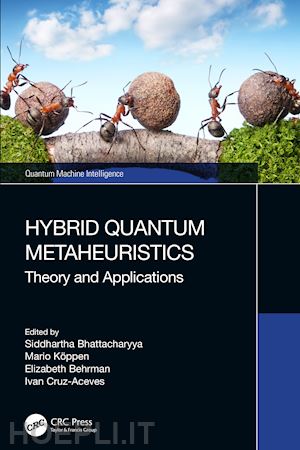Siddhartha Bhattacharyya is currently working as a professor, department of computer science and engineering, CHRIST University Bangalore, India. His current research interest includes soft computing, pattern recognition, image processing, multimedia information retrieval, quantum-inspired soft computing, portfolio optimization and social networks. He is life fellow of Optical Society of India, Fellow of Institute for Engineering Research and Publication (IFERP) India, Institution of Electronics and Telecommunication Engineers (IETE) India, a senior member of Institute of Electrical and Electronics Engineers (IEEE) the USA and member of Institution of Engineering and Technology (IET) the UK. He has published several research papers in journals of national and international repute. Mario Köppen is presently working as a professor, graduate school of creative informatics, Kyushu Institute of Technology, Japan. He worked as a scientific assistant at the Central Institute for Cybernetics and Information Processing in Berlin and from 1992 to 2006, he was working with the Fraunhofer Institute for Production Systems and Design Technology, Germany. He has published more than 150 peer-reviewed papers in conference proceedings, journals and books and was active in the organization of various conferences as a chair or member of the program committee, including the WSC online conference series on Soft Computing in Industrial Applications, and the HIS conference series on Hybrid Intelligent Systems. He is a founding member of the World Federation of Soft Computing, and Associate Editor of the Applied Soft Computing journal. His current research interest includes image processing and pattern recognition, neural networks, evolutionary computation, fuzzy fusion, mathematical morphology, algorithm design and complexity, multi-objective and relational optimization, and digital content management. Elizabeth C. Behrman is currently working as a professor of physics and mathematics, Wichita State University, USA. She received masters and Ph.D. degrees from the University of Illinois at Urbana-Champaign, the USA in 1981 and 1985 respectively. Her research interests and publications are broad, ranging from chemical kinetics and reaction pathways to ceramic superconductors to nuclear waste vitrification. She was the first to predict the stability of inorganic Buckyball’s and buckytubes, and among the first to design and computationally test models for quantum neural networks. Her major focus interest includes theoretical quantum computing, quantum information, and quantum control, particularly quantum machine learning and quantum AI. She has taught courses including quantum mechanics, classical mechanics, solid-state physics, electricity and magnetism, computational physics, and theoretical physics. She has published several research papers in journals of national and international repute. Ivan Cruz Aceves is presently working as a researcher, Centre for Research in Mathematics (CIMAT), Mexico. He did his Ph.D. in electrical engineering from Universidad de Guanajuato, Mexico in 2014. His current research interest includes segmentation techniques and stochastic optimization methods for medical image processing and analysis. He has published research papers in the journal of national and international repute."











